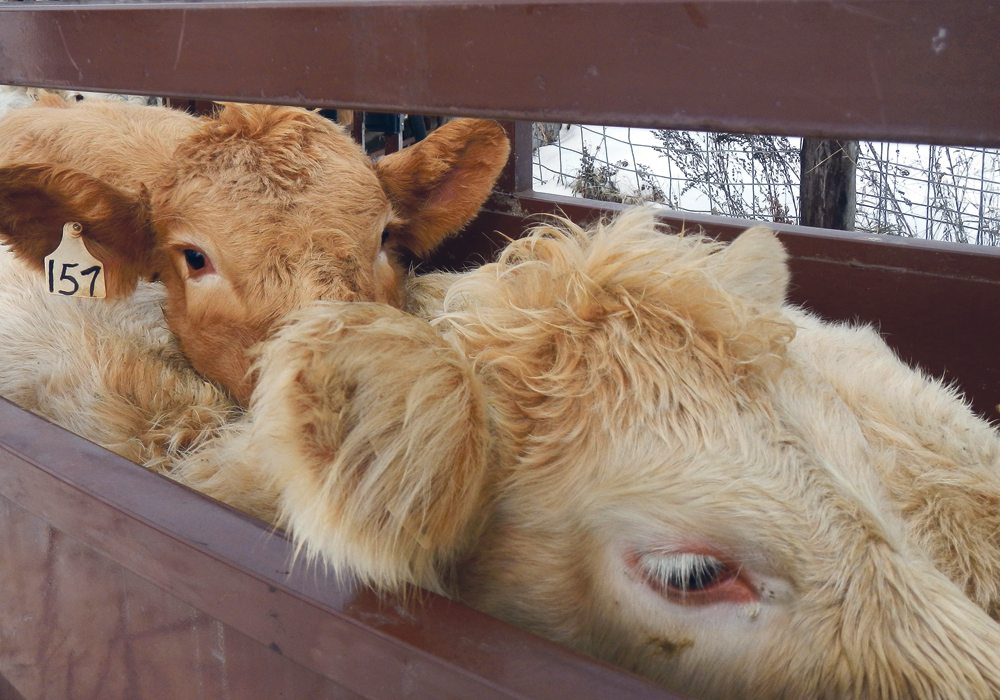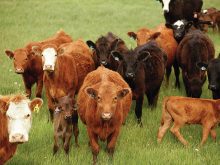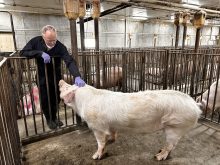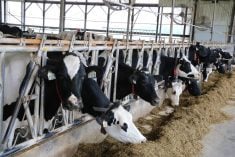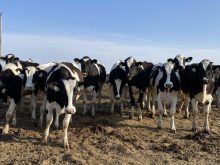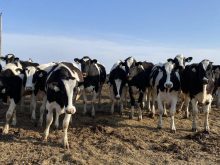Cow-calf producers and veterinarians are often focused on which vaccines to use as part of their herd health program.
However, the timing of those vaccines may be a critical decision as well. Several factors can play a role in the decisions surrounding when a particular vaccine should be administered.
The age of the animal can impact how it responds to vaccination. There are a lot of unknowns about how newborn or very young calves respond to vaccines, but we do know that the newborn calf has a functional immune system.
Read Also

Beef check-off collection system aligns across the country
A single and aligned check-off collection system based on where producers live makes the system equal said Chad Ross, Saskatchewan Cattle Association chair.
The immune system begins to develop in the fetus as early as 40 days into gestation and by the third trimester, the immune system of the fetus can respond to a variety of infections.
However, most calves are born with no antibodies in their blood stream and although their immune cells function at a slower rate, their immune system is completely functional.
Traditionally, we assumed that calves that had high levels of maternal antibodies in their system (that is received from the colostrum) would not respond well to vaccinations.
These maternal antibodies were expected to bind up the vaccine and prevent the immune system from responding to the vaccine.
Maternal immunity definitely interferes with the calf’s response to vaccines, but several studies have shown that young calves can still respond to vaccination in the face of maternal antibodies.
Vaccinations that are given early can still help prime the immune system for a memory response to a second vaccination when the maternal antibodies are gone.
Vaccinating a very young calf can also influence other aspects of immunity that are not as obvious as antibody levels and have a positive effect.
However, in general, older calves with lower maternal antibodies will usually respond with a higher antibody response to vaccination.
Another important factor in the timing of a vaccination is matching the animal’s immunity to the time period of highest risk for disease.
Vaccines do not provide immediate protection. They typically require three to four weeks to develop peak levels of antibodies after a vaccine is given.
This may be shortened if an animal has previously been vaccinated because its immune system will have a memory response, which is faster than the initial immune response.
Most cases of respiratory disease in weaned beef calves happen during the high-risk period after weaning and transportation to the feedlot.
In many cases, the vast majority of respiratory disease cases happen shortly after arrival at the feedlot.
Calves vaccinated before this risk period, and have had adequate time for immunity to develop, will usually have better immunity during the high-risk period than calves vaccinated when they arrive at the feedlot.
In many cases, the timing of the vaccine is driven by an attempt to have the highest level of antibodies produced during the period of highest risk.
We give scours vaccines to cows in late pregnancy to have the highest levels of antibodies in the colostrum available to the newborn calf.
We usually try to give viral vaccines containing bovine viral diarrhea virus to the cow before breeding to have the highest levels of antibodies circulating in the cow’s system to protect the fetus in early gestation.
A recent study in the Journal of Animal Science investigated the timing of vaccines for viral diseases such as infectious bovine rhinotracheitis (IBR), bovine viral diarrhea (BVD), and bovine respiratory syncytial virus (BRSV).
The authors of this study focused on the timing of vaccines relative to weaning and examined the antibody response seen in the calves.
A small percentage of calves did not seem to respond to vaccination in terms of antibody production regardless of the timing of vaccination.
In total, 6.5 percent of calves did not appear to respond to BVD Type 1 vaccination, 0.4 percent failed to respond to BVD Type 2 vaccination and 13.9 percent of calves failed to respond to IBR vaccination.
These calves had no impaired growth and they may be protected because of the herd immunity created by vaccinating all of the other calves, but the authors hypothesized that these calves might be more vulnerable to viral infections.
The study also demonstrated that the typical factors such as age of the calf, circulating maternal immunity, and the timing of weaning all had an impact on the vaccine response.
Of particular interest, the timing of vaccine with respect to weaning had a different effect depending on different viral components of the vaccine.
Calves vaccinated three weeks before weaning had a better antibody response for IBR and BRSV. However, calves vaccinated on the day of weaning had a better antibody response to BVD Type 1 and 2 viruses.
The authors concluded that the stress of weaning affected the response to vaccination differently for different viruses.
This study just raises more questions regarding vaccination timing with respect to weaning, but it also demonstrates that the question of which vaccines to use is just one part of the herd health program.
The timing of these vaccines is a significant decision and should not be determined solely by the most convenient time to handle the animals.
Your veterinarian can help devise a vaccination protocol that includes selecting the right vaccines to use and the best timing to provide immunity at the critical time periods for your herd.
John Campbell is a professor in the department of Large Animal Clinical Sciences at the University of Saskatchewan’s Western College of Veterinary Medicine.



